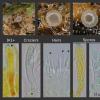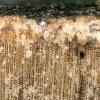
01-01-2026 18:35
Original loamy soil aside a artificial lake.The co

31-12-2025 19:27
Collected from loamy soil, at waterside (completel

30-12-2025 16:44
Pascal DucosBonjour,Une anamorphe rose stipitée, très nombre

30-12-2025 17:14
 Bernard CLESSE
Bernard CLESSE
Bonjour à toutes et tous,Pourriez-vous aider Albe

29-12-2025 10:15
Hulda Caroline HolteHello, I found and collected this propoloid ascom

30-12-2025 09:04
Hello.A Pyrenomycete sprouting sparsely but very d

29-12-2025 17:44
Isabelle CharissouBonjour,J'aimerais savoir si d'autres personnes au



Was the substate exposed, a still-attached branch? Or on the moist gorund?
The MLZ reaction of hairs and exciple is used in Huhtinen's key as a character but one must know that it is not at all shown in Lugol.

Thanks a lot for your messages!
I should have mentioned that, actually these are collections from the Suffolk (Brandon, UK). I am in Cambridge for work at the moment, that is why I do not have access to my usual microscope and reagents.
I will try my best to save some samples for further observations on rehydrated samples (still better than nothing I guess) when I am back to France.
I can confirm this was coniferous wood (picture enclosed). It was on the ground, and quite rotten already. Thanks for the tip regarding the use of Melzer vs Lugol for reaction with hairs, I was not aware of that.
I will go back there and see if I can collect older specimens to do more observations, including a more careful look at the resin and to measure hairs.
Cheers,
Edouard





